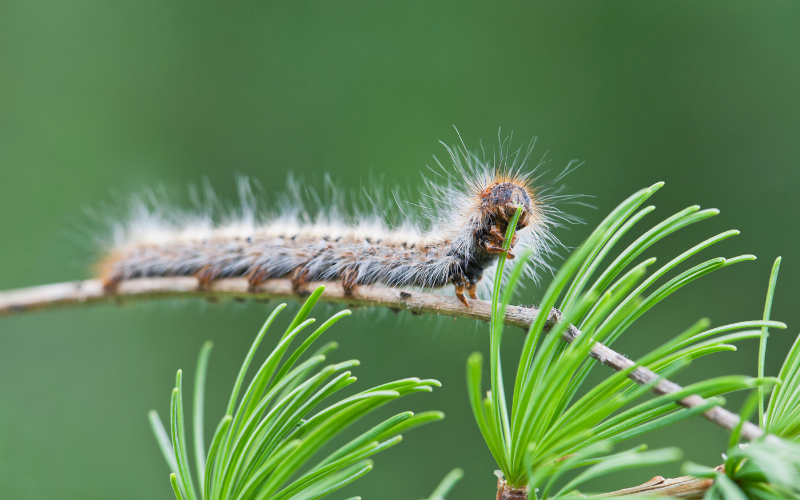
Pine processionary moth (PPM) intercepted on imported pine trees
Pine Processionary Moth (PPM) was intercepted on a small number of imported pine trees earlier this year by Defra inspectors. Although there remain no established populations of PPM in the UK, the Association urges members to be vigilant for signs which may indicate the presence of PPM on pine and conifer plants in the UK – particularly when new specimens are planted.
Pine Processionary Moth (PPM) is a destructive species affecting pine and other conifer trees across Europe and North Africa. It can cause affected trees to lose their leaves, negatively affecting their growth, and has the potential to cause tree mortality, particularly in young plantations. Larvae and caterpillars can also pose a risk to human and animal health as they are covered in tiny, irritating hairs.
Pine trees (trees of the Pinus genus) are most susceptible to pine processionary moth. Other recorded conifer hosts include Atlas cedar (Cedrus atlantica) and European larch (Larix decidua).
Identification
Although there are similarities between pine processionary moth (PPM) and oak processionary moth (OPM), the two exhibit distinct characteristics in relation to their host, lift cycle and appearance:
- PPM are most likely to be found on pine trees, or occasionally, other conifer trees, whereas OPM are more likely to be found on oak trees or other trees with leaves rather than needles
- PPM caterpillars are most likely to be seen in winter and early spring whereas OPM are most likely to be seen in late spring and early summer
- PPM make nests among the foliage (needles) and small branches of host trees whereas OPM make their nests on the trunks and larger branches of oak trees
Forest Research has produced a webpage which provides a detailed description of the pest, complete with images useful for identification. Please see the Further reading section, below, for a link to this document.
Defra urge stakeholders to report symptoms to them immediately, via the TreeAlert webpage. Please see the Further reading section, below, for a link to this page.
Further reading:
